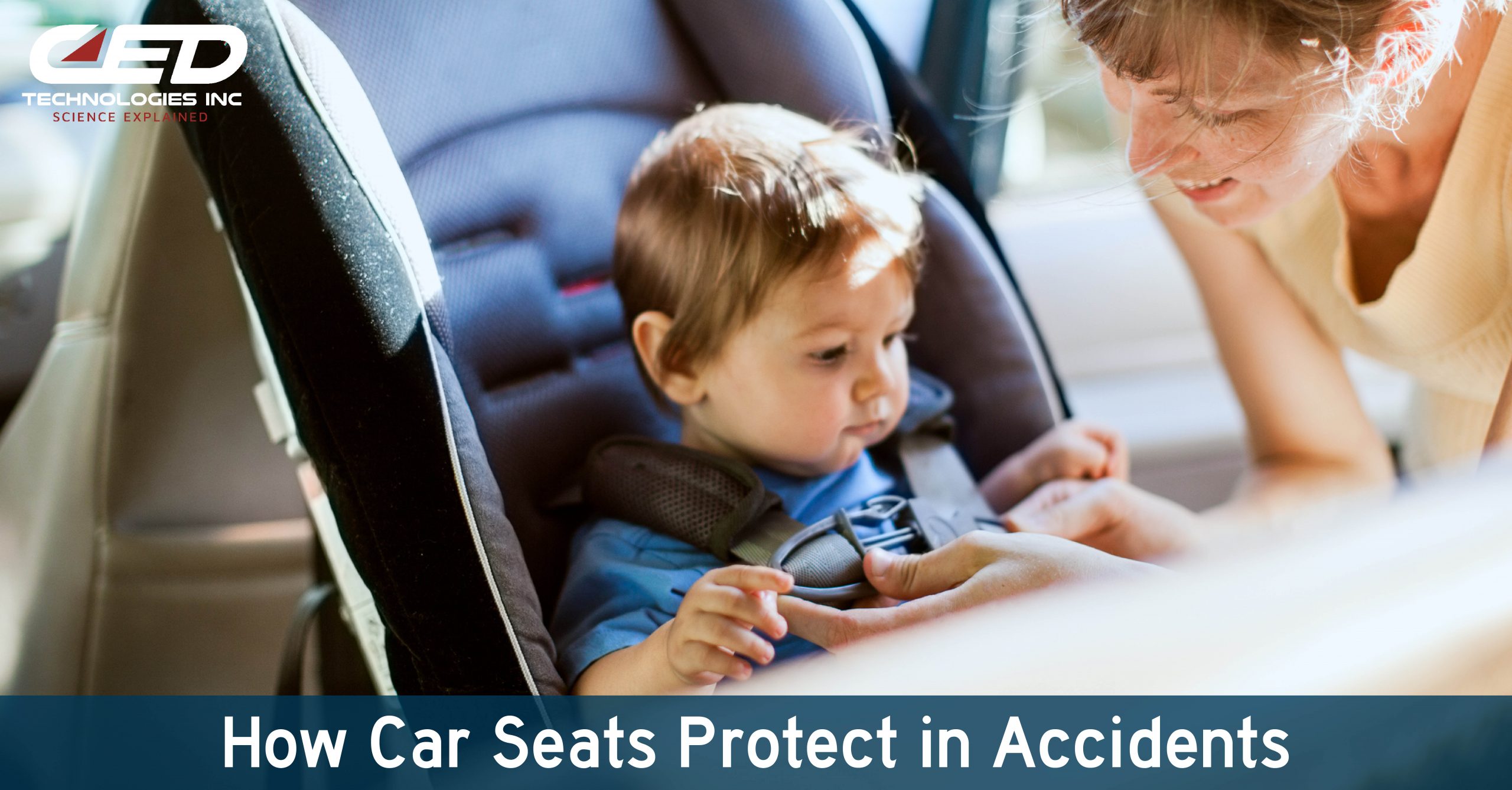When investigating accidents, CED evaluates the use of proper safety equipment and restraints like seatbelts to determine the cause of the incident and the relationship to the injuries sustained during the incident. According to the CDC, motor vehicle crashes are a leading cause of death among children in the United States. In 2019, more than 600 children 12 and younger died in motor vehicle crashes. Of those children 12 and younger who died in a crash, 38% were not buckled up.
In a car accident, the biomechanics are different for infants and young children than they are for adults. The bodies of infants and young children are structurally different from adults in ways that impact the design of protection and restraint systems. In comparison to their body size, young children’s heads are larger in size and weight. Neck ligaments are weaker than those of an adult. The ribs of a child are horizontal and have little calcium, while adult ribs are at an angle, are calcified, and provide better protection in a crash.
For these reasons and more, choosing and properly using the right type of child restraint device every time your child is in the car is extremely important. Child restraint laws require children riding in vehicles to use approved restraint devices such as car seats, booster seats, or seat belts that are appropriate for their age, height, and weight.
Knowing which device to use at which stage of child development is important. The CDC recommends the following:
- Using a rear-facing car seat from birth until age 2–4 years of age.
- After outgrowing the rear-facing car seat, children should be in a forward-facing car seat until at least age 5.
- After outgrowing the weight for a forward-facing car seat, use a booster seat until the child is tall enough and weighs enough for the seat belt to fit properly.
- When the seat belt fits properly without a booster seat, the child should sit in the back and use a seat belt on every trip.
Many young motor vehicle occupants are at increased risk of injury due to physical differences that affect their interaction with the vehicle interior and restraints, as well as their tolerance to a crash. CED has biomechanical engineers within our Transportation Group that can investigate safety restraints in the car and determine cause of injury. Contact us to review your next case or submit a case request online.
Click Here To See Our Full List of Experts Click Here To Submit an Inquiry about a possible Claim or Case.






